Helpful Tips and Tricks for Teaching Long/Short Vowel Discrimination
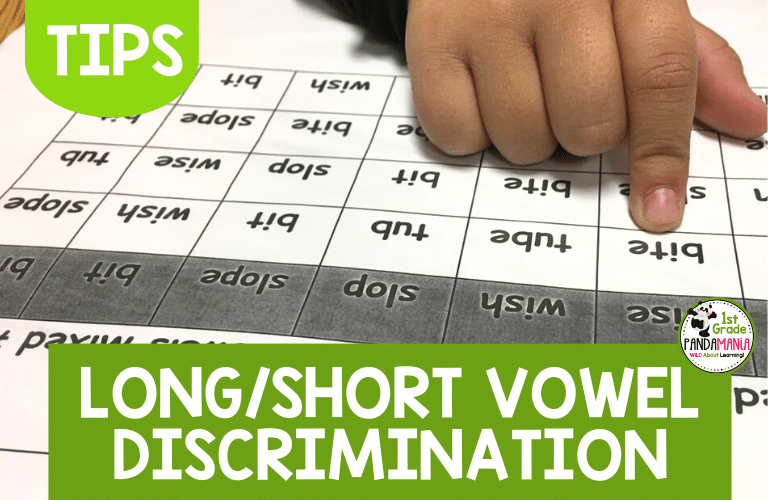
Most first graders make the transition from decoding short vowel words to long vowels pretty well.
But some students need more exposure, and visual cues are often quite helpful for these kids. When making the transition from reading short vowel words to long vowel words,
Repeatedly pointing out the two vowels helps to train their eyes to see that the two vowels work together to make the long sound. Along the way in our teaching lives, we pick up little tricks from other teachers that make us wonder,
“Why didn’t I think of that?” This is one of those little tricks.
It’s a simple, but very effective technique to use to introduce long vowels and for students struggling with long/short vowel discrimination. One way to practice this is by randomly saying long or short vowel sounds and having students say, “long” or “short” after each sound you say. But first,
Once auditory discrimination between long and short vowel sounds is solid, then they are ready for the visual piece.
I teach my first graders that when I point to a vowel with one finger and say, “sound,” I expect them to say the short vowel sound. (I use these charts in both whole group on the carpet and for small groups at the kidney table that need more exposure.)
Here is an example of the short vowel instruction below:
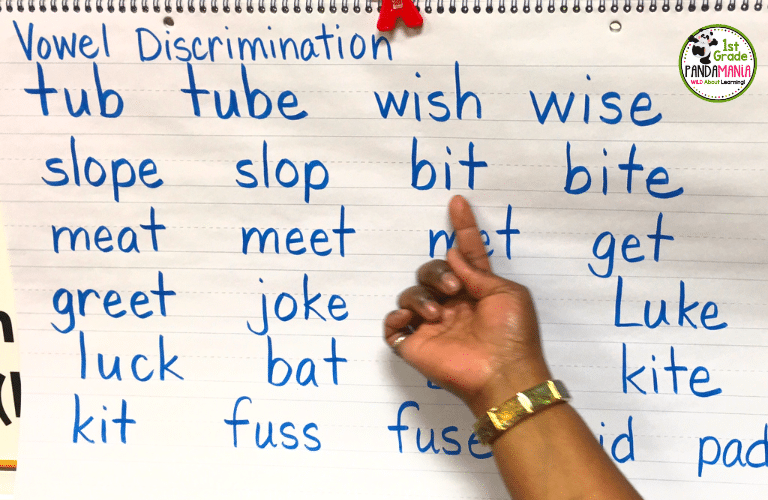
When I point to the vowel and silent e with two fingers and say, “sound,” I am prompting the long sound. This draws their eyes to the silent e that helps the vowel say its name. I also point to the vowel pairs in the same way with two fingers to draw their eyes to the two letters that make the one long vowel sound.
Here is an example of the long vowel instruction below:
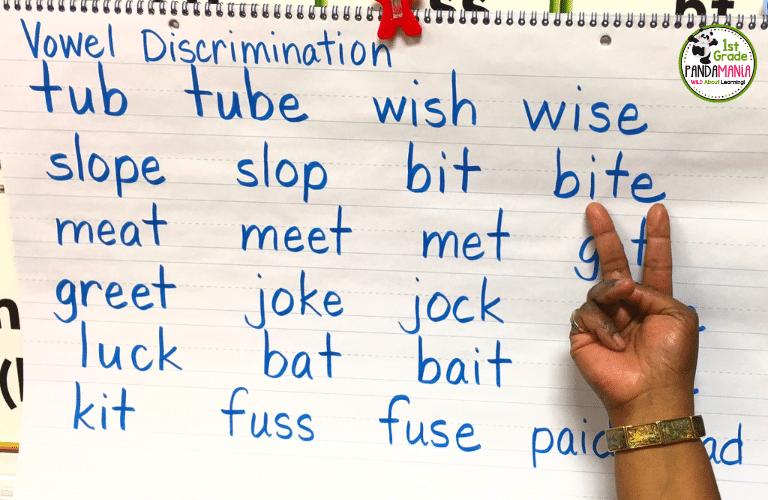
Tip: The examples I just talked about above are using the technique prompt and guide…learn more about this method here!
The technique I have learned is to simply point, say “sound,” prompting the long or short sound, then point to the beginning of the word and say, “read.” Once they understand the finger prompts and my word prompts of “sound” and “read,” they are ready to read a chart of words in isolation. Check out this vowel discrimination activity..the speed drill.
See an example in this 13-second video below:
The same prompting can be used when students read text.
When they hesitate in front of a word in text, I say, “sound,” prompting them to say the vowel sound and then I say, “read.” After several repetitions of this, students can more easily see the long or short vowels automatically on their own.
I have found that brief prompting during a reading of a text is much better than interrupting students with long dialogues to explain or reteach. They will understand your prompt of “sound,” and “read” if you have practiced it enough. Soon they will be prompting themselves as they read, and that’s what we want!
After guidance with a chart, students can also practice further with their own focus boards or drill sheets that have a mixture of long and short vowel words. Find these Speed Drills for Words With Long and Short Vowels HERE.
The top row has 8 long and short vowels, then after that row, it repeats the same 8 words but in random order. There are 20 pages of drills with different words.
Tip: Keep these speed drill sheets organized and reusable, by simply keeping them in plastic sleeves to protect them and store them in a binder.
Once students understand your expectations for using these drills, they can be added to centers and partners can time each other and check for accuracy.
Get your Long/Short Vowel Discrimination Drills HERE.

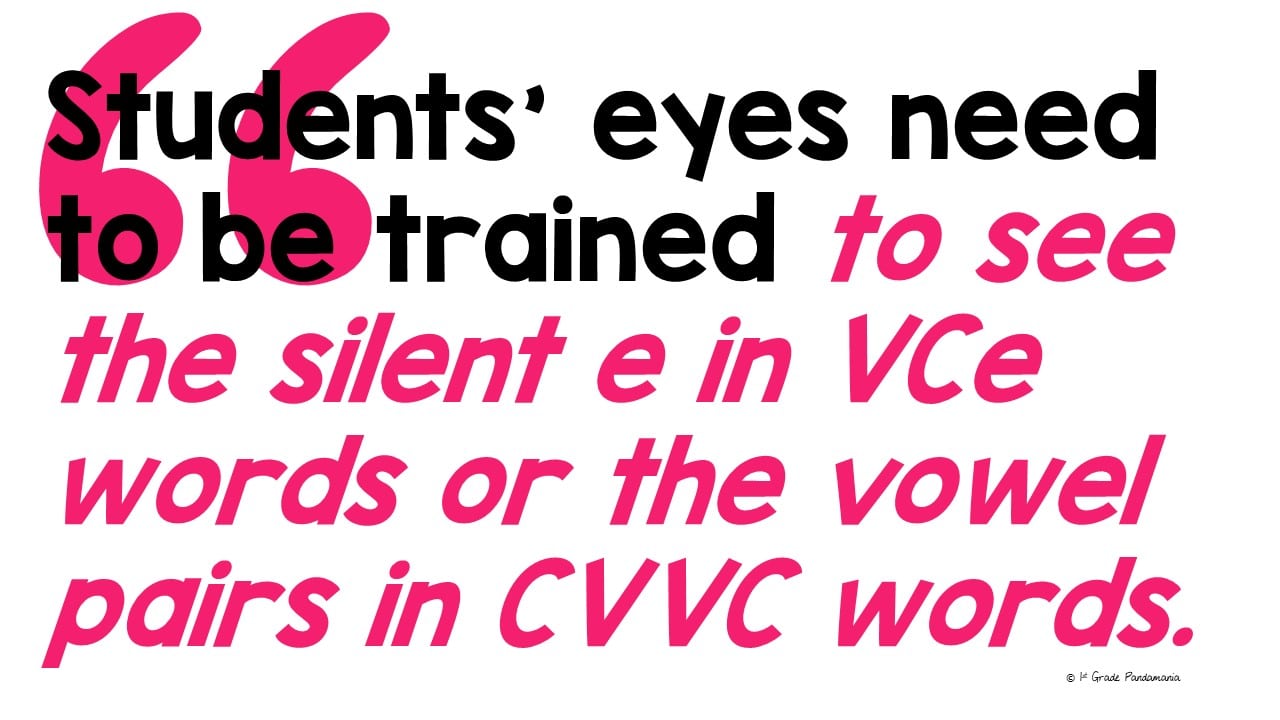
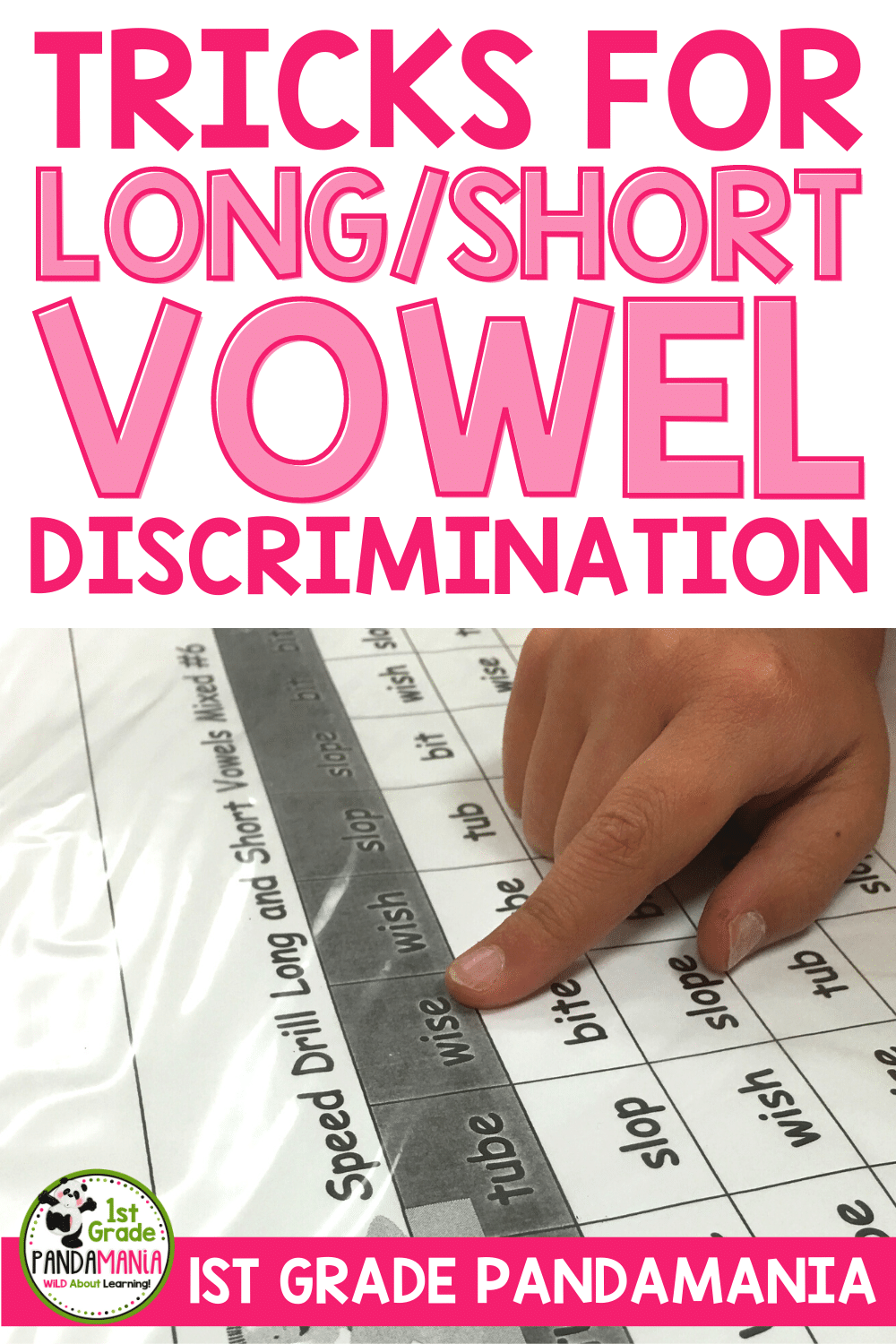
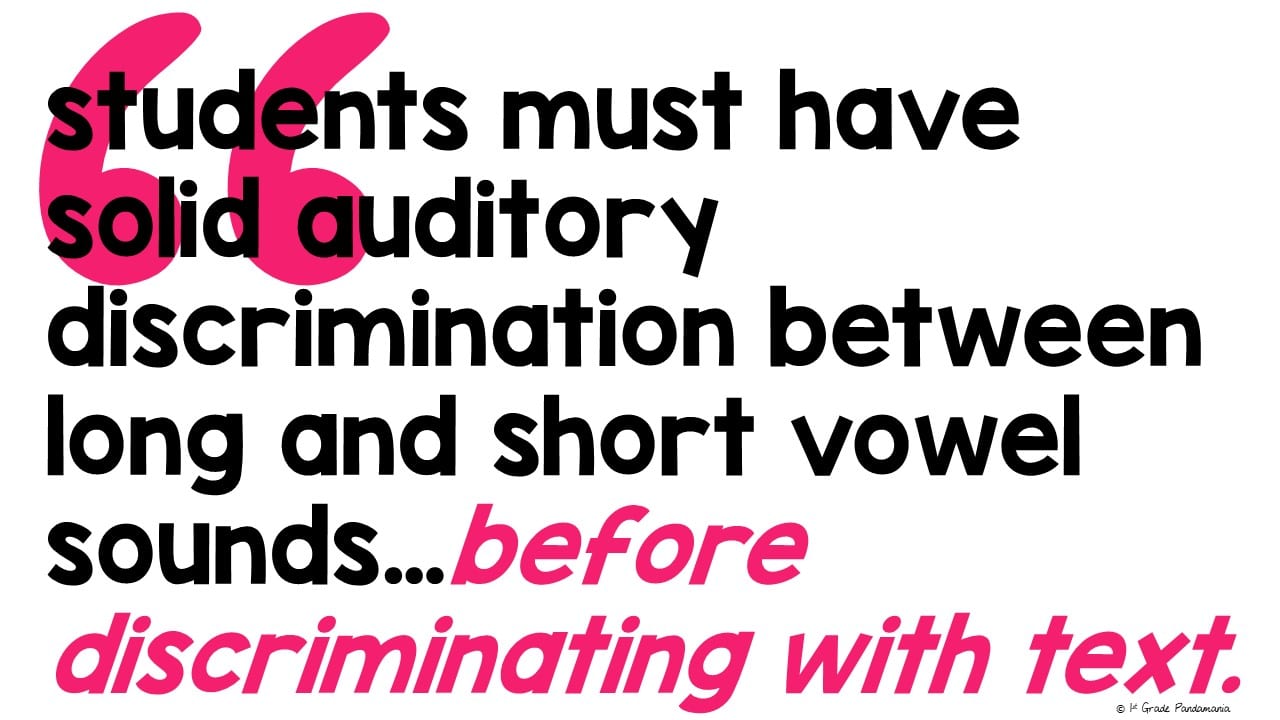
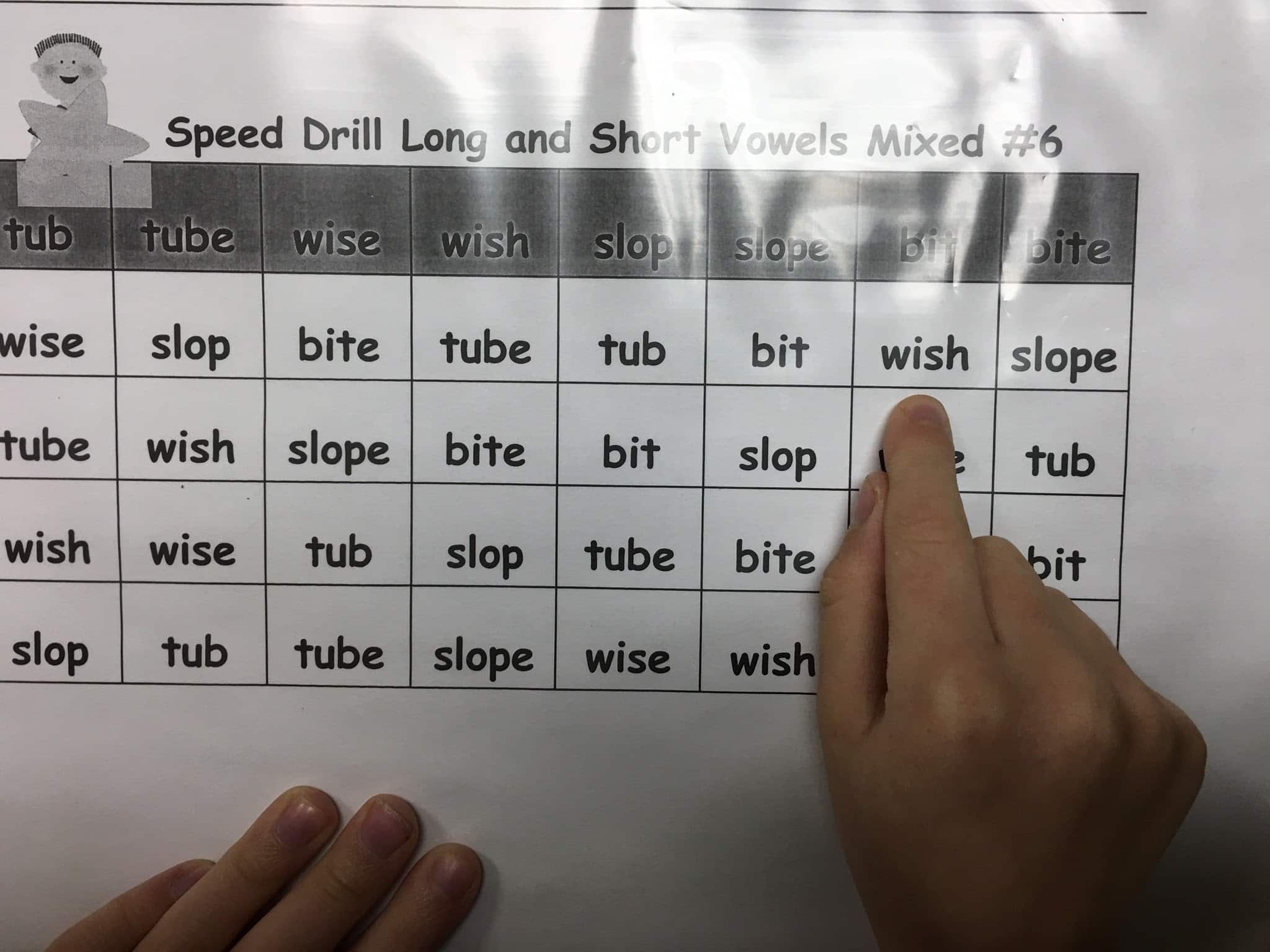
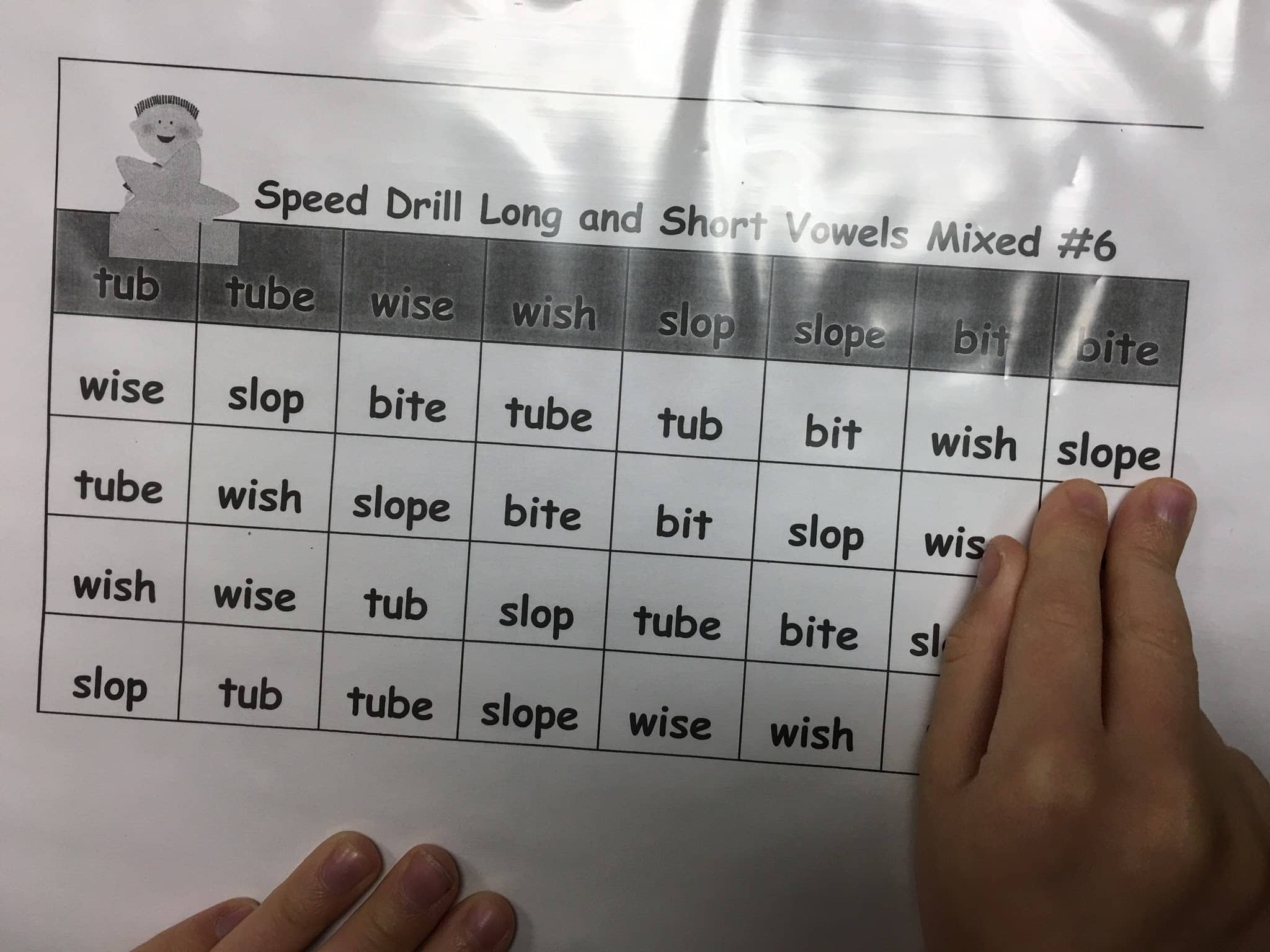

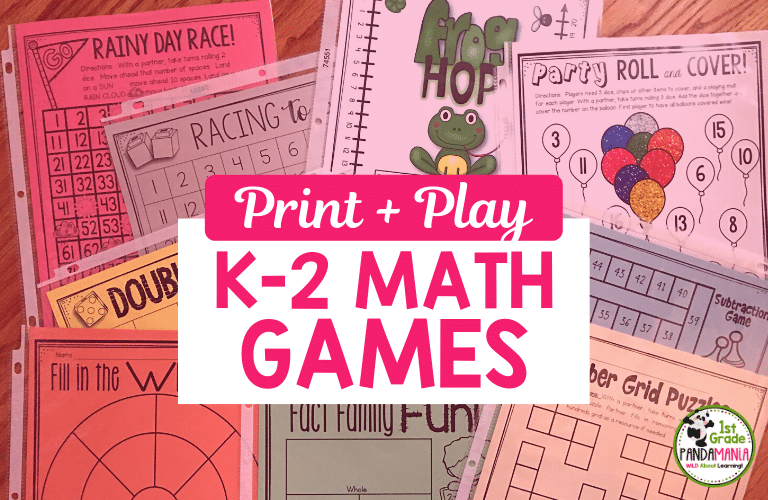
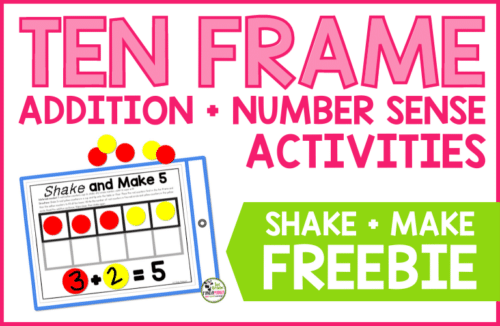



This is such a great lesson! Thank you so much!
I used these with one of my students today, I loved it so much, thank you for sharing! Do you by any chance have something similar for math?